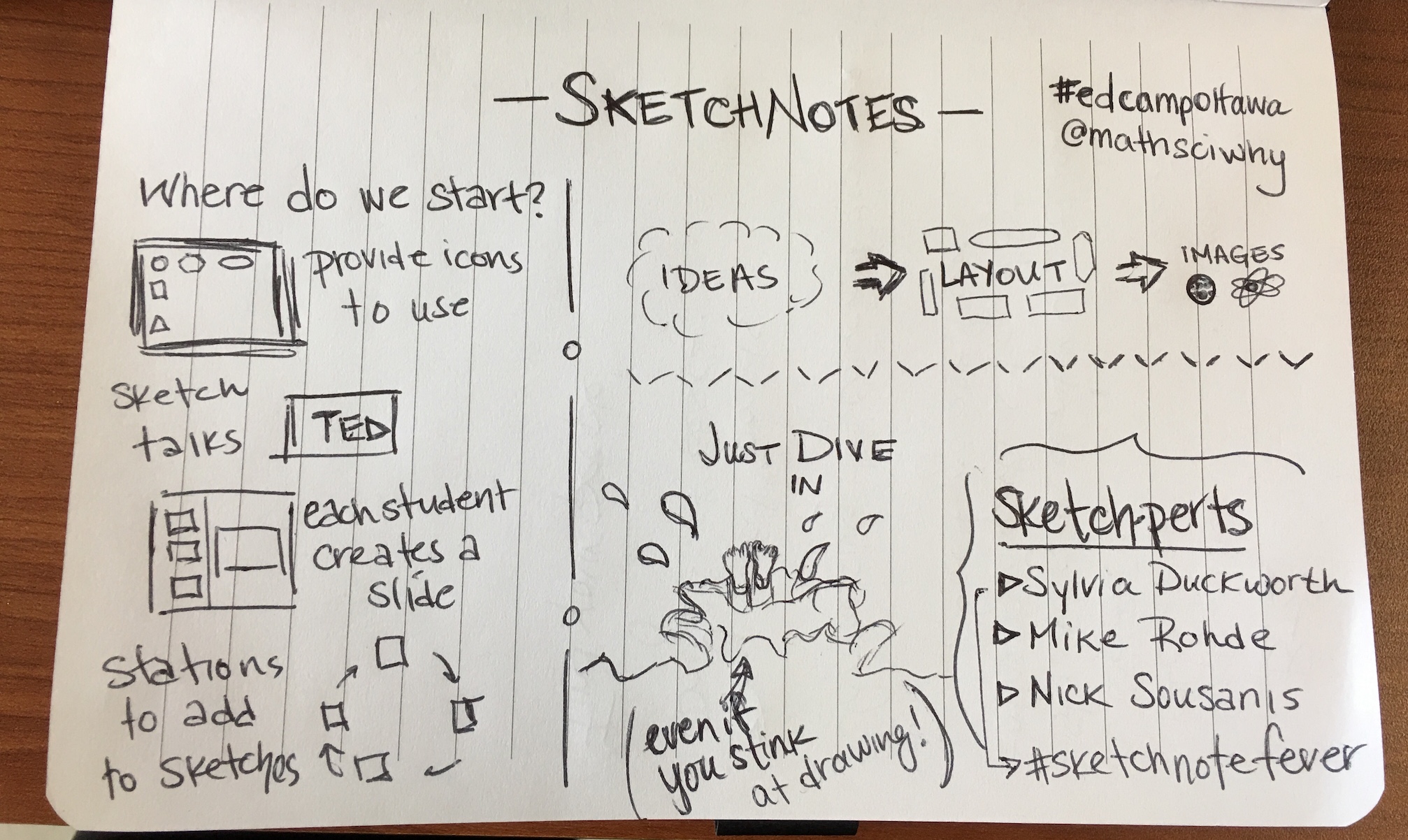After following the #sketchnoting conversation between educators on Twitter, I became intrigued. I popped in the sketchnoting room at the 2018 EdCamp and my brain was abuzz with ideas for how this could change the way students engage with information in Science class.

Not one to waste any time, I reordered our units in SNC1DF and set Earth & Space: the Study of the Universe next on our calendar. My idea was simple:
- Have students listen in class and jot down/sketch key words or concepts.
- Provide ample time in class for hands-on activities, sketchnoting the day’s key ideas, and practice.
- Have students upload their sketchnotes each day into a shared Google Slides presentation.
Here is why I’m excited about this idea:
- Pulling out the Big Ideas and key terms is a challenge for grade 9 students. I think this will help them practice identifying what is most important
- All of the research points to this being a more effective way for students to encode & recall information. An effective & efficient memory is important in science (though I’d argue understanding is more important – see the next point!)
- When writing notes during class, I find students aren’t engaged or listening. They are so focused on voraciously writing down all the details that often they don’t even know what they’re writing.
- By working with the material after the lesson, I’m hopeful students will sit with the material a bit more. I see this happening in two ways: 1. being more engaged & conversational during times that concepts are being presented, and 2. thinking through the material when sketchnoting (how do I draw something I don’t get?)
- When students upload their sketchnotes, they can serve as an immediate formative assessment tool to see how well they understand the material.
- The collaborative presentation provides ample examples of the material, reworked by various students. This means that if a student doesn’t get a concept, they can look at many examples. Or if they see that other students have represented something in a totally different way, we can have meaningful conversations around those differences.
I’m sure there will be many unforeseen issues and pitfalls of the approach, but learning to take in feedback & readjust is a big part of meaningful education!
And really, what’s science without experimentation?
You can follow our sketchnoting adventure on Twitter and in this series of posts.